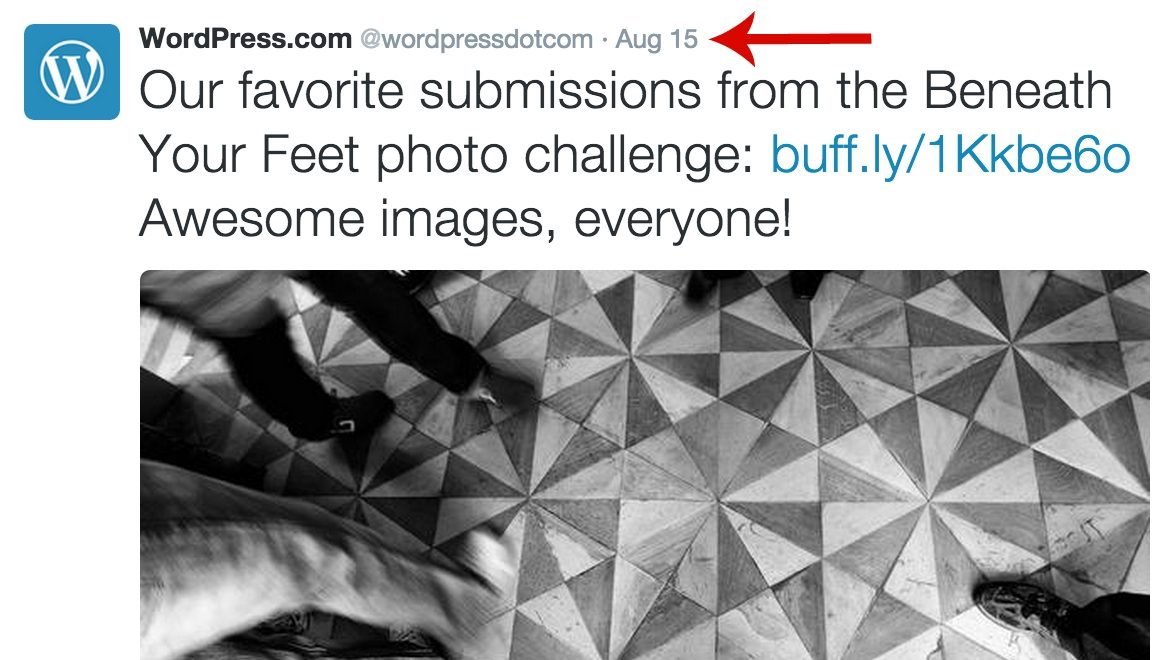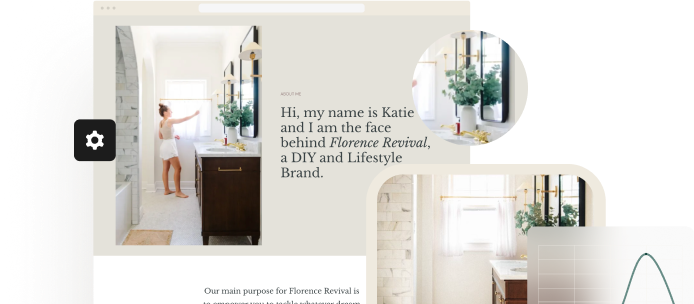X (formerly known as Twitter) is a service for exchanging brief messages between users. Use the Twitter block to embed content from X into your posts and pages.
In this guide
To embed a post from X (formerly known as a tweet) means that you can display an individual post on your site that includes:
- The post’s text, images, and links.
- Action buttons for X users to reshare and favorite posts without leaving your site.
- Links to hashtag pages, usernames, and a follow button.
The quickest way to embed a post from X is to paste the URL of the post on an empty line in the editor.
To find the URL, locate the post you want to share. Then click the timestamp as marked with the arrow below:

You’ll be taken to the page for that individual post on X. Copy the URL from the address bar that looks like this:

⚠️
Twitter also has an ‘Embed Tweet’ option with a code. This method is not supported, so make sure to use the link instead.
Once you have copied the URL, paste it on an empty line in the WordPress editor. It will automatically become a Twitter block, and the post will become embedded on your site.
Here’s how a single X post looks when embedded:
Another way to embed a post from X is to first insert the Twitter block into your post or page.
To add the Twitter block, click on the + Block Inserter icon and search for “Twitter”. Click it to add the block to the post or page.
💡
Using your keyboard, you can also type /twitter on a new line and press enter to quickly add a new Twitter block.
For more information, visit our detailed instructions on adding blocks.
When you add the block, there is a box to enter the URL (i.e., link) to the post/tweet you want to embed. Paste that link into the box and click Embed.
When you click on the block, a toolbar of options will appear above it:

The Twitter block has the following options in its toolbar:
- Change block type.
- Drag the block.
- Move the block up or down.
- Change the alignment (left, right, or center, plus wide and full-width if supported by your theme.)
- Edit the URL of the post
- More options
When you select a block, you will find additional block settings in the right sidebar. If you do not see the sidebar, you may need to click the Settings icon in the top-right corner to bring up the settings. This icon looks like a square with two uneven columns:

Keep the option “Resize for smaller devices” enabled if you’d like to preserve the aspect ratio on different browser sizes.

For more information, visit our detailed instructions on Advanced Settings.
